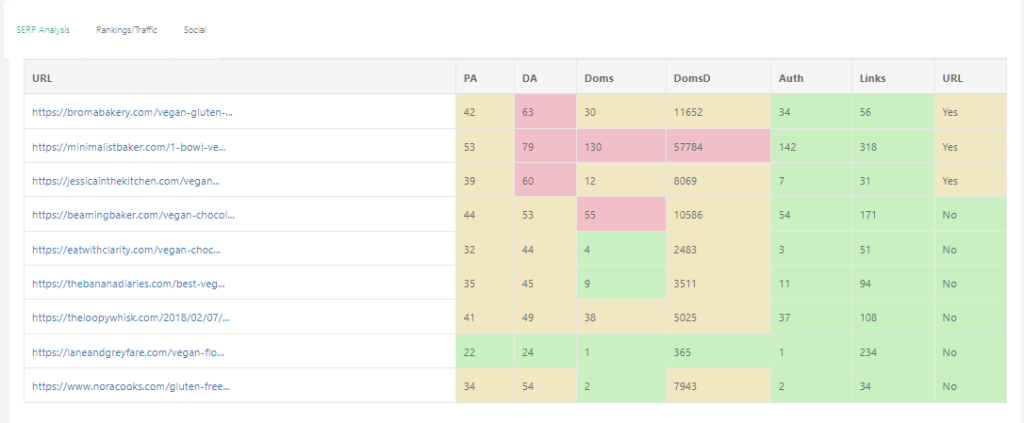Maybe you’re just starting out blogging or you’ve been going at it for a while and you’re not seeing any results. This is a common issue amongst first-time, beginner and even seasoned bloggers. the system of keyword research is an absolutely essential part of blogging if you want traffic.
Why Is Keyword Research Important For Your Blog?
Keyword research is the process of identifying the keywords that people are using to search for information online. By understanding what keywords your target audience is using, you can optimise your blog posts to rank higher in search engine results pages (SERPs). This will help you attract more traffic to your blog, which can lead to increased readership and engagement, and opens up the opportunity to create a revenue stream.
If you just blog for fun or as a hobby, then keyword research may not be as important to you. However, if you want to get traffic and make money from your blog, then keyword research is an essential foundation process.
Keyword research is an ongoing process. As your blog grows and your target audience changes, you will need to continue to research new keywords and update your old posts to target those keywords. However, the time and effort that you put into keyword research will be well worth it in the long run.
Keyword Research Tools
There are loads of keyword research tools on the market today. And everyone has an opinion on which one is best. so it can be confusing knowing even where to start. Semrush, Ahrefs and Moz are the three big players today in this marketplace.
But these tools are very expensive for bloggers just starting out who can’t afford to shelve out over $100 per month looking for keyword ideas. Google Keyword Planner is a free option but it’s very limited.
However, the tool that I have ended up using for years is a budget version of the aforementioned big industry players. This tool is called KeySearch.
Keysearch was something of a revelation to me when I found it. It does more or less everything you need to get started with serious keyword research.
It may not have all the massive capabilities and huge databases of its bigger cousins. But for a blogger who wants to get started, it is perfect.
In this article, I’m going to take you through a practical tutorial on how I do keyword research.
Sign Up
Sign up for a KeySearch account. You can get a free trial to test out the tool before you commit to a paid plan.
Brainstorm
Start off by choosing a seed keyword. This is the main keyword that you want to target with your content. For example, if you’re writing a blog post about how to make a chocolate cake, your seed keyword might be “chocolate cake recipe.”
I start off by using the Brainstorm tool. Type in your idea – this is what you want to write about. The purpose of this is the fundamental idea behind keyword research – to write for what people are actually searching for!
In this example, I’m going to start off with ‘chocolate cake recipe’.

The tool will give you lists of active searches on Google, Yahoo, Bing and more. Pick one you like and think you can write a detailed, informative, and helpful post.
First things first, we’ve got to be realistic. It’s not possible if you have a new blog that you will be able to rank for such a broad term as ‘chocolate cake recipe’. This is why we need to drill down into what is known as ‘longtail keyphrases’. These are key phrases which are made up of more words – which should – in theory – be easier to rank for than a ‘shorttail’ – or broad search term.
So let’s go with ‘gluten free chocolate cake recipe’ which I can see two-thirds of the way down under the Yahoo listings. This is an example of a longtail search term.
Click on the keyphrase of your choice then click the button that says ‘Research’.
Keyword Research
Now we are in the guts of the platform – this is the Keyword Research page where we can get a great amount of detail. Firstly look at the score Keysearch is giving our chosen keyphrase.

The higher the score, the more difficult it will be to rank for this term. A score of 43 means the competition is ‘moderate’.
However, I want to make my life a little easier, so I want to pick a keyword in green – where the competition is ‘easy-moderate’. The term ‘vegan gluten free chocolate cake’ has a green score of 38 – and it also has a relatively high search volume of 1900. This is the average number of searches a month for this term.
Insider Tip for Bloggers
Here’s an insider tip – pay attention to the sites that show up in the search preview (below). If they are also blogs or sites similar to ours, then it’s a good bet that this is a good keyword to go for. If not, for example, if the term is populated by online stores, government sites or news sites for example, then you may want to look at another search term.

Using Content Assistant
Now we come to the meat of the matter. It’s time to write your blog. And Keysearch has a handy tool for this too. Click on the Content Assistant link at the top of the page. In the left-hand section, there is an area where you can start typing your blog post. And in the right-hand area, you will see the information below.

For this keyphrase, as you will see above, we are given the competition rating and more vital pieces of information. We are told that the average word count for a 1st page on Google ranking web page is 2,949 words. this is what you should be aiming for if you want to get the first page. No one said it was going to be easy, but again these are just guidelines.
Below that is the real gold though. Recommended keywords. These are words or phrases that you should be including in your blog post. These are doubly helpful as they can steer your post in the right direction by using them as sub-topics under your main keyphrase.
Helpfully, the yellow flashes beside each phrase will turn blue as you include them in your article.
So these are the basics. What’s important is to get started. Don’t fret trying to find the perfect keyphrase. Get going and try to get 10 or 15 fully keyword-researched posts under your belt.
